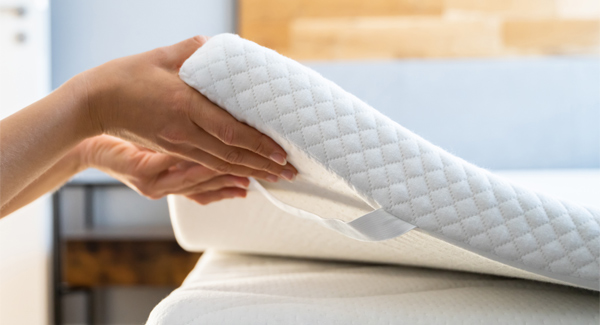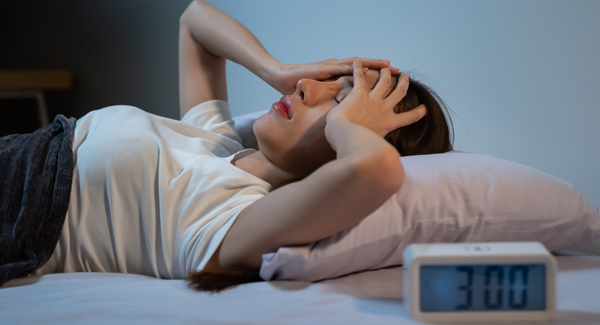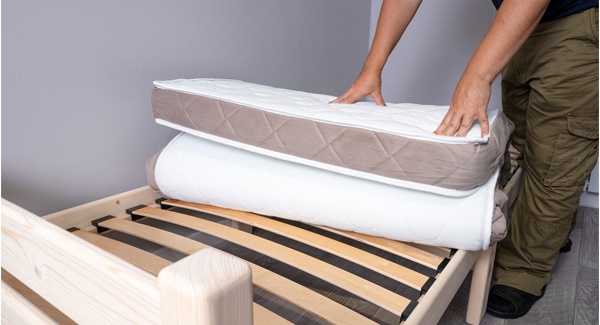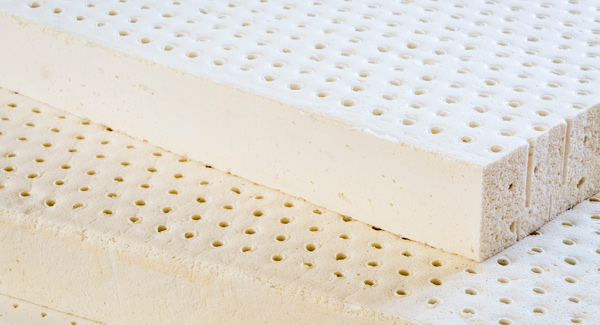Home » Mattress advice » How Many Springs Should A Mattress Have?
How many springs should a mattress have?
Article navigation
- Published:
- Written by: Tony Brown
- Topic: Mattress advice
Sprung mattresses are still popular. The number of springs in a mattress can affect how supportive it will be. There is a perception that the more springs there are in a mattress, the more supportive it should be. This is true to some extent. More springs mean more points of contact with the body and will better conform to your shape.
Ideally, you should be looking for a mattress that contains at least 1,000 springs, as anything less is unlikely to provide the support you need. However, it’s not just about the spring count. The shape, height, and thickness of the springs also affect the support and responsiveness.
Spring counts are often included in the mattress specification or description and are always based on the number of springs in the 5’0″ (150 cm) king size version. This means smaller sizes will contain fewer springs, and larger sizes will contain more springs.
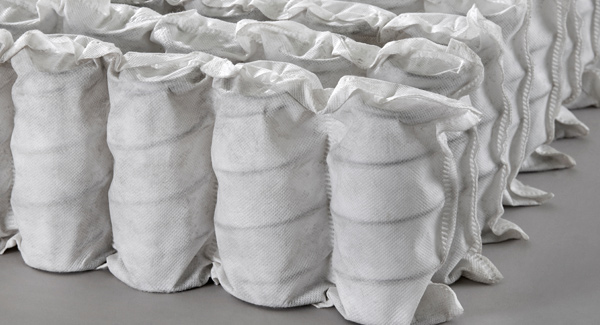
The problem with comparing spring counts
Choosing a new mattress can be a confusing and often frustrating task. Almost every manufacturer claims their mattresses are the answer to a better night’s sleep.
There are many factors to consider when choosing a new mattress. Shoppers often compare spring counts to help them narrow down their options. This method may be useful when comparing spring counts from the same range and manufacturer. However, it is less effective when comparing mattresses from different manufacturers and can often be confusing. This is because mattress specifications and descriptions can often be unclear and misleading. You won’t know whether you’re comparing full-height springs with mini springs.
Some manufacturers also include the number of springs in the model name, which may not accurately describe how many springs are actually in the mattress. For instance, a mattress named ‘Pocket 2000’ may include base springs and mini springs to mislead shoppers into thinking the mattress is better than it actually is.
Another problem with spring counts is comparing a cheap mattress with 2,000 springs to a top-of-the-range mattress with 1,200 springs. You may think the cheaper mattress represents great value, but through further investigation, it is likely not as much of a bargain as you initially thought.
Like most things in life, you generally get what you pay for, and mattresses are no different. It’s worth learning more about the manufacturer’s reputation, how the mattress is constructed, and the quantity and quality of fillings inside before making your decision.
Mattress types
Most mattresses have spring interiors to provide support. There are typically two types of springs used in mattresses. Coil springs or open coil units, and pocket springs.
An open coil mattress is made from a continuous wire wrapped around to create a series of larger coils. These coils are typically arranged in rows and connected together to form the spring unit. Open coil mattresses are commonly used because they are inexpensive to produce. A 5’0″ (150 cm) open coil mattress usually contains between 300 and 800 springs.
Pocket springs are smaller, softer springs encased in fabric pockets and sewn together. Each spring works independently to provide more support. There is also less movement, meaning sleeping partners are less likely to disturb one another when they move in bed.
Spring counts in a 5’0″ pocket spring mattress start from around 600 springs in cheaper models but can go up to 10,000 springs and even beyond.
Pocket spring mattresses can contain one or more layers of pocket springs. A single layer can have up to 2,000 springs. To achieve more, the manufacturer will stack pocket spring units on top of each other. Some manufacturers may also include layers of mini or micro springs as additional comfort layers.
Mini or micro springs
Mini or micro springs are used in mattresses to provide extra comfort layers. These lightweight springs are only about an inch in depth and are often used as an alternative to fillings. Mini springs are not as supportive or responsive as full-height springs and compress much more quickly. However, the springs are resilient and recover their shape well.
Each comfort layer in a 5’0″ king size mattress can contain up to 2,500 mini springs. These layers can also be stacked on top of each other to increase the overall spring count significantly.
Bed base springs
Luxurious mattresses can often be paired with a sprung divan base that features an open coil or pocket spring unit for the mattress to rest on. These springs can improve the overall level of comfort and support.
Some bed bases contain 2,000 or more pocket springs in the bed base. It’s not uncommon for manufacturers to include the spring count in the model name, which may also include bed base springs. For instance, a ‘Pocket 5000’ may include 2,500 mattress springs and 2,500 bed base springs. So, if you’re buying the mattress separately, there will be significantly fewer springs in the mattress than expected.
What other factors should be considered
A new mattress is a significant investment, so it is important to consider other factors besides mattress spring counts.
Mattress firmness
Your choice of mattress firmness comes down to personal preference. Some people prefer a firmer bed, while others like to sink into the mattress. Correct support depends mainly on your body weight. A mattress should mould and conform to the shape of the body.
If the mattress is too soft, the body will sag, which will cause pressure around the hips. You may also find it harder to turn over in bed. On the other hand, a firm mattress pushes against the body, and you may feel pressure around the shoulders and hips.
Pocket spring mattresses often come in soft, medium, firm, and sometimes extra firm spring tensions. This is achieved by altering the thickness of the wire. So you can choose the tension that matches your body weight.
Mattress construction
Mattresses may appear similar, but the differences inside are significant. Cheaper mattresses are mass-produced and often contain synthetic materials. Better quality mattresses are often made by hand to higher standards of workmanship. They often contain natural materials like wool, silk, and cashmere. Natural fillings feel soft and sumptuous and are typically more resilient than synthetic materials.
Another feature often associated with higher-quality mattresses is hand-side stitching which gives supportive strength to the edge of the mattress.
Price
Price is one of the main considerations when choosing a new mattress. A mattress is a significant investment, but what price are you prepared to pay for a good night’s sleep? The average lifespan of a mattress is around seven to eight years. However, higher-quality mattresses can often last longer when looked after properly.
When buying a new mattress, you should spend as much as you can afford. But be wary of cheap bargain mattresses with high spring counts. You may find the spring count has been exaggerated or that the mattress contains thin layers of upholstery. If it seems too good to be true, it probably is.
Final thoughts
Shoppers can often become obsessed with how many springs are in a mattress. Using spring counts to compare mattresses can often be misleading as it may be unclear how the spring count is made up. Does it include base springs or mini springs, for example?
Don’t rush into purchasing unless you’re satisfied the mattress is right for you. If you get the opportunity, it helps to visit your local store to try out a few beds and mattresses to determine which you find the most comfortable and supportive.
Otherwise, many online retailers offer risk-free sleep trials, where you can return the mattress if you find it uncomfortable.
See our Bed buyer’s guide for more information about buying a new bed and mattress.
Share this article

About the author
Tony Brown is the founder and creator of The Bed Consultant. His career in the bed industry began in 2002. After graduating from university with a degree in Business Administration, Tony joined one of the largest independent furniture retailers in the UK as a bed consultant. Tony has helped thousands of customers find the perfect mattress.

